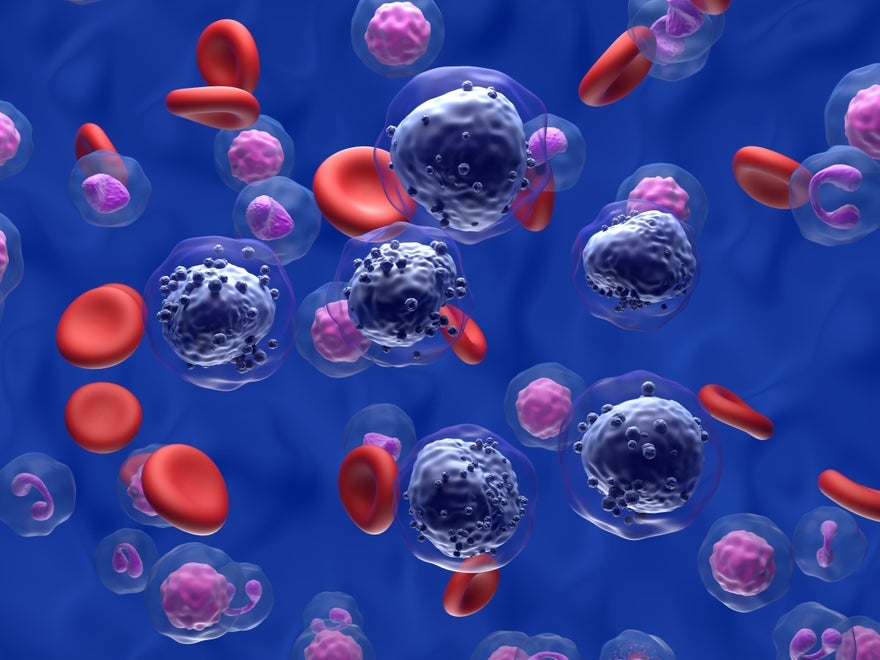
Acute myeloid leukaemia (AML)
Understanding acute myeloid leukaemia
Acute myeloid leukaemia (AML) is a type of cancer that begins in the bone marrow, which is the soft inner part of bones where new blood cells are produced. AML specifically affects the myeloid cells, which are responsible for creating red blood cells, platelets, and certain types of white blood cells. This form of leukaemia is called ‘acute’ because it progresses rapidly and typically requires immediate treatment.
AML is classified into different subtypes based on genetic abnormalities, the maturity of the cells, and how they look under the microscope. A common subtype is acute promyelocytic leukaemia (APL), which is characterised by a specific genetic swap between chromosomes 15 and 17.
Common symptoms include fatigue, fever, bruising, petechiae (small, red or purple spots on the skin caused by bleeding under the skin), anaemia and frequent infections.
Learn more: Acute lymphoblastic leukaemia
Treatment options for acute myeloid leukaemia
Treatment for AML typically involves several stages and depends on factors like your age, overall health, and specific genetic mutations present in the cancer cells. The main treatment options include:
1. Chemotherapy: this is the primary treatment for AML, aiming to kill as many leukaemia cells as possible and bring the disease into remission.
2. Targeted therapy: these drugs target specific genetic mutations within cancer cells, helping to prevent their growth and spread.
3. Radiotherapy: used rarely and mostly when the brain is affected, radiotherapy targets and kills leukaemia cells in specific areas of the body
4. Stem cell transplants: often recommended for patients who achieve remission after initial chemotherapy, stem cell transplants can help rebuild healthy bone marrow.
Learn more: Treatments for blood cancer and blood disorder
Stem cell transplants and acute myeloid leukaemia
Stem cell transplants are crucial for treating AML, especially in younger patients and those with relapsed disease. This procedure involves replacing damaged bone marrow with healthy stem cells, either from the patient (autologous transplant) or a donor (allogeneic transplant).
Interestingly, stem cell transplants are also used to treat other blood cancers, such as Non-Hodgkin lymphoma (NHL). The shared use of this treatment highlights the interconnected nature of blood cancers and the importance of advances in stem cell therapy.
Learn more: Donor search and match
How we can help
At DKMS patients and their families are at the heart of everything we do. If you are currently seeking a stem cell donor, we can share your story to raise awareness and encourage more people to join the donor register, which can give hope to patients everywhere of finding their compatible stem cell match.
With a global database of 12 million potential stem cell donors and over 115,000 donations facilitated so far, we are dedicated to supporting you. Please reach out to us to learn more or get involved.
References
Acute myeloid leukaemia (AML) statistics | Cancer Research UK. Last reviewed September 2024.
Acute myeloid leukaemia (AML) | Leukaemia UK. Last reviewed September 2024.
Acute myeloid leukaemia (AML) incidence statistics | Cancer Research UK. Last reviewed September 2024.